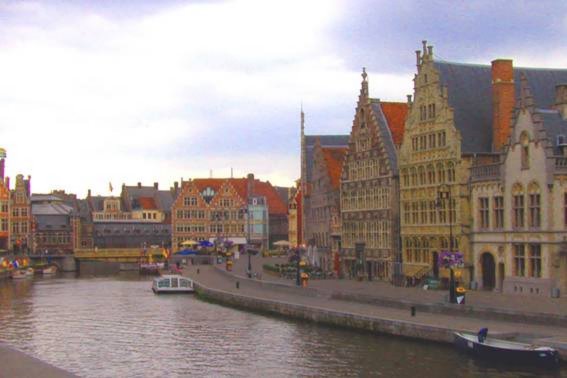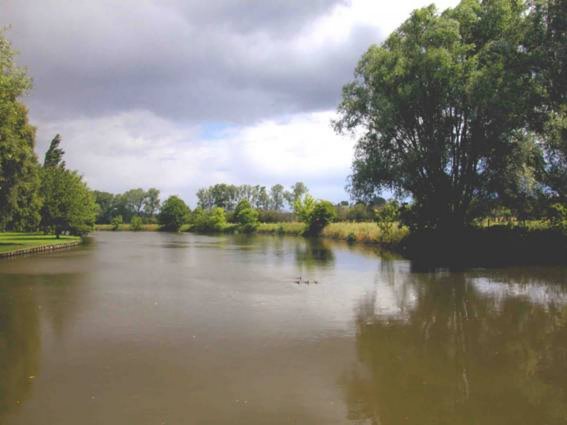 |
|
|
From: Colin Shannon-Garvey
[Colin@Shannon-Garvey.com]
Gent is a beautiful city with the castle, the ornate Gothic cathedral, begun in the 13th century, the rows of guild houses and many other interesting sights and museums. The cathedral contains one of the greatest treasures of Christendom: The Adoration of the Mystic Lamb, a stupendous polyptych by the van Eyck brothers, completed in 1432. It is visually stunning and the audio commentary, available in English, gives more that a hour of information and interpretation. The Emperor Charles V was christened in this cathedral more than 500 years ago. The fine arts museum is one of the best in Belgium and contains an outstanding collection of works by the Flemish Primitives, Rubens, Ensor, Bosch and all those other guys. From Gent we visited Brugge by train. Linked to the North Sea it was an important trading port from 3rd century Roman times. From the 13th to 16th century it was a city of great wealth and trade. Adversity struck when competition in the wool trade came from England and the river estuary silted up. It was rescued by the English in the 19th century when it was rediscovered as a perfect medieval city by British travelers on their way to see the battlefields of Waterloo, just south of Brussels. It is a city of tangled streets, narrow canals, handsome squares and old gabled buildings. It is almost too perfect. The city’s only industry now is tourism and it is indeed full of tourists and tourist shops and restaurants. We did find a brewery that has been making handcrafted ales for centuries, choice of two, we had one of each with lunch. All in all, perfect as Brugge is, it doesn’t have the feel of a genuine working city and I personally preferred Gent.
We moved south down the canal version of the Leie to Kortijk, a city established in Roman times that became the Flax capital of Europe in the Middle Ages and the uncontested producer of damask linen and lace during the Renaissance. The museums have interesting exhibits describing the production processes over the centuries and fine examples of the produces. We rented a car in Kortrijk to explore Flanders fields, the sites of the World War 1 baftlegrounds and cemeteries. The Flanders Fields Museum in town of Ypres is an overwhelming and sobering experience as is the cemetery of Tyne Cot, where 50,000 British soldiers are buried. Ypres was on the western front. For three years the allies kept the Germans at bay here; the line moved 12 km away from Ypres and then back again during this time. The whole area was a muddy wasteland with not a building, tree or blade of grass. Half a million allied troops died here. No one knows how many Germans also died, but probably as many. Memorials and cemeteries, including German ones, dot the landscape. We traversed east from Kortrjrk back to the river Schelde and on south to the cities of Tournai and Mons, then east to Namur. From Tournai we have been in the Wallonie, French speaking area of Belgium. More on this in our next missive. Colin and Patricia “Fiesta”
|
|

